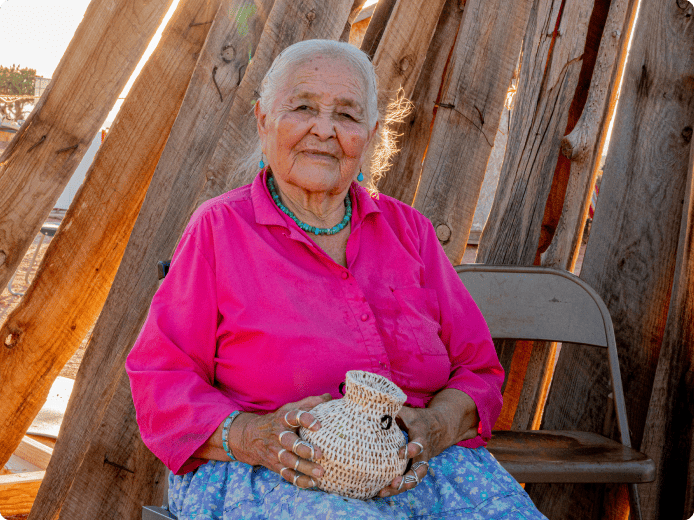Real-World Task Guidelines:
EAL Literacy
CLB 1L
Indigenization

Possible Topics
This theme may include these topic areas:
And so on
Planning Context
Learners may require the following:
- Visual clues
- Topics are related to immediate personal needs
- Face-to-face or one-on-one digital interactions
- Text that is clear, sparse and very easy to read
- Slower rates of speech
- Non-demanding contexts
Instructors may need to:
- Limit vocabulary to highly familiar words and phrases
- Speak slowly
- Use increased white-space, large font size, a literacy-friendly font and clear images
- Modify instructions to limit to 2 to 5 words
- Provide extensive scaffolding and support
Comprehending Information
Understand very simple information about highly familiar, concrete topics.
- Identifies a few obvious factual details, such as numbers, letters, time and dates.
- Identifies a few key words and short expressions related to immediate needs.
Comprehending Instructions
Understand very short, simple instructions, commands and requests related to immediate personal needs. Instructions / commands are about 2 to 5 words.
- Identifies letters and numbers.
- Responds to requests and directions to provide personal information.
Sharing Information
Give basic personal information in response to direct questions from a supportive listener.
- Answers simple questions about personal information.
- Uses alphabet to spell out words, such as own name.
**Listen to correct terminology for Indigenous peoples, languages and cultural practices. Emphasize the importance of avoiding stereotypes and appropriation.
Getting Things Done
Make and respond to simple requests related to immediate personal needs.
- Uses appropriate single words, phrases, memorized expressions and courtesy formulas.
- Uses simple expressions of time.
Interacting with Others
Understand short greetings and simple goodwill messages.
- Locates dates, times, addresses and phone numbers.
- Locates specific words and phrases.
Getting Things Done
Get information from very short, simple, common formatted texts.
- Identifies numbers and familiar words.
- Identifies an address.
Reproducing Information
Copy numbers, letters, words,
short phrases or sentences from simple lists or very short passages, for personal use or to complete short tasks. Texts to copy are up to 2 sentences in length, have a clear layout and basic everyday information.
- Copies letters, numbers, words and short sentences, including capitalization and punctuation.
- Copies text legibly; reader may still have difficulties decoding some letters and numbers.
Interacting with Others
Convey greetings or other goodwill messages by completing cards or other very short, simple standard texts. Messages are a few words in length, addressed to a familiar person and related to personally relevant situations.
- Completes a message with simple and minimal information.
- Addresses message for sending.
Literacy Learner Considerations
Listening and Speaking
1L learners are meeting the requirements of CLB 1 in listening and speaking. It is important for 1L learners to develop all new language orally first so that it is familiar to them when they learn to recognize it in print. Listening and speaking should be taught and assessed orally and not through the skills of reading and writing. There is a focus on learning basic and immediately relevant vocabulary and beginning to learn the sounds of the language, including the ability to break words into sounds and to blend sounds into words.
Reading
To be successful in 1L reading tasks, 1L learners can work towards the development of reading skills in the context of real-world tasks, such as:
- developing oral vocabulary related to the task
- recognizing that letters have distinct sounds
- connecting letters to sounds
- reading own name and recognizing own address and personal information
- developing first sight words
Writing
To be successful in 1L writing tasks, 1L learners can work towards the development of writing skills in the context of real-world tasks, such as:
- developing oral vocabulary related to the task
- forming lowercase and uppercase letters
- identifying the first sound and some others sounds in a familiar word
- copying words
- writing own name and personal information
Additional Sample Real-World Tasks and Competency Areas
Listen to a few highly simple words related to Indigenization. (Comprehending Information)
Tell a classmate to wear an orange shirt for Orange Shirt Day. (Giving Instructions)
Read a couple of sentences in a short, highly simplified story about an Indigenous person. (Comprehending Information)
Copy a few words into a short, simple guided text about attending an Indigenous cultural event. (Sharing Information)
Digital Literacy Strategies
Successful completion of some tasks may require some baseline digital knowledge and skills.
Learners may need to:
- Look at a website.
- Read information from a screen.
Instructors can:
- Introduce websites that are relevant to the task(s).
- Show learners how to send and receive text messages.


Equity, Diversity and Inclusion Strategies
Instructors Can:
- Use diverse representations of people in all learning resources and images, including people who are 2SLGBTQIA+, Indigenous, Francophone and of other cultures, and people who have disabilities or who are neurodivergent.
Trauma-Informed Strategies
Triggers:
- Discussions of experiences of Indigenous people such as residential schools may be triggering for learners who have experienced trauma.
- Many literacy learners may find that they have had similar experiences to Indigenous Peoples and have similar aspects to their cultures. They may find descriptions of racism triggering.
- Give learners advance warning of this topic and be aware that there may be learners who require support.
Strategies:
- Learners who have experienced trauma often benefit from having routine.
- Learners who have experienced trauma benefit from having choices.

Sample Real World Tasks
This information is aligned with the Canadian Language Benchmarks (CLB) and is designed to help guide you in the planning process. You can use these sample real-world tasks to guide and inform your selection or creation of skill-building activities, skill-using tasks and assessment tasks.
These sample real-world tasks include the following: skill, real-world task, competency area, one competency statement and two sample indicators of ability. This is not an exhaustive list: there are more indicators of ability and information about this CLB level in Canadian Language Benchmarks English as a Second Language for Adults. Consult this resource for more information and to select your own competencies or indicators of ability. Remember, you can use more learner-friendly language in your materials and assessments.
This is NOT a lesson plan, module plan or curriculum.

